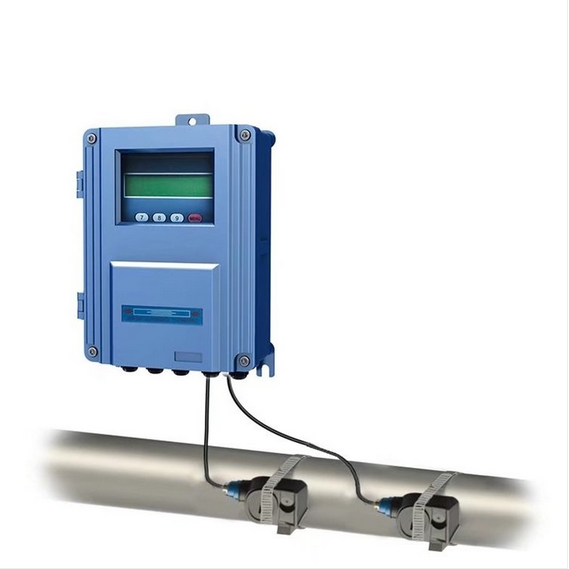Clamp-on ultrasonic flowmeters are highly suitable instruments for measuring flow rates in full-pipe applications. They are known for their easy installation and non-intrusive nature. These devices can measure the flow of media in pipes of large diameters and are particularly useful for measuring media that are difficult to access or observe. With high measurement accuracy, they are largely unaffected by various parameters of the measured medium. This makes them ideal for handling challenges other types of flowmeters cannot solve, such as measuring corrosive, non-conductive, radioactive, or flammable and explosive media. These advantages have led to their widespread use in industries like water supply, wastewater treatment, seawater processing, as well as oil, chemical, and metallurgy.
However, one common issue during their installation is weak signals, which can hinder accurate measurements. Below, we explore the potential causes and solutions to ensure optimal performance of the flowmeter.

1. Ensure the Pipe is Completely Filled with Fluid
One of the fundamental requirements for accurate measurement is that the pipe must be fully filled with the fluid. Partial filling can cause the ultrasonic signals to scatter or fail to transmit properly. Before installation, verify the pipe’s flow conditions to ensure there are no air pockets or interruptions in the fluid flow.
2. Consider the Pipe’s Proximity to Walls
When the pipe is too close to a wall or an obstacle, it may restrict the proper placement of the transducers. In such cases, consider mounting the transducers on an inclined pipe section rather than strictly on a horizontal diameter. The “Z-method” installation (where transducers are placed on opposite sides of the pipe, forming a “Z” path for the ultrasonic signal) can often yield better results in such scenarios.
3. Select Dense and Well-Prepared Pipe Sections
The physical condition of the pipe plays a significant role in signal transmission. Choose a section of the pipe that is dense, free from defects, and smooth. Thoroughly polish the surface to remove paint, rust, or debris, ensuring the area is shiny and clean. Use an adequate amount of coupling gel to enhance the contact between the transducer and the pipe surface. Proper coupling is critical for minimizing signal loss.

4. Optimize Transducer Placement
Accurate transducer placement is key to achieving a strong signal. After attaching the transducers, carefully move them slightly around the installation point to locate the position where the strongest signal is received. This step is crucial to counteract potential issues such as internal pipe scaling or deformations that may cause ultrasonic signals to reflect off unintended areas.
5. Address Internal Pipe Scaling
For metal pipes with severe internal scaling, the buildup can interfere with the transmission of ultrasonic waves. In some cases, lightly tapping the pipe may loosen or crack the scale, improving signal clarity. However, this approach carries risks. Gaps between the loosened scale and the pipe wall may reduce transmission efficiency. As a preventative measure, consider installing a filtration device upstream of the flowmeter, particularly in systems prone to scaling or contamination. This will not only improve signal quality but also enhance the long-term stability and reliability of the measurements.
6. Perform Regular Maintenance
Since clamp-on ultrasonic flowmeters are often used to measure dirty fluids, contaminants may accumulate over time on the internal surfaces of the transducers. These deposits can significantly weaken the signal and cause malfunctions. Regular inspection and cleaning of the sensors are necessary to maintain accuracy. Additionally, proper system design, such as incorporating a filtering mechanism, can help reduce the frequency of such issues.

Conclusion
Clamp-on ultrasonic flowmeters are versatile and reliable tools for fluid flow measurement, offering unique advantages over other types of flowmeters. However, achieving optimal performance requires careful attention to installation and maintenance. By ensuring full pipe flow, selecting appropriate installation sites, properly preparing the pipe surface, and optimizing transducer placement, users can significantly improve signal strength and measurement accuracy. Preventive measures, such as installing filters and performing regular maintenance, further ensure long-term stability and reliability.
These guidelines not only address the challenges of weak signals but also help maximize the potential of ultrasonic flowmeters in a wide range of industrial applications.
